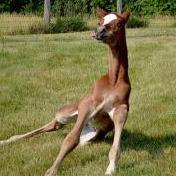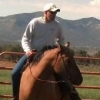All Activity
- Today
-
.thumb.jpg.6e903dd66163ad5672f00f144058c571.jpg)
Singer 51w55 trouble making the feed dogs walk
Northmount replied to Lu.mi.sewing's topic in Leather Sewing Machines
I split your post off of an old thread. Better to start a new thread than to tag onto an old thread with a different topic. -
Interesting. The reason I tried it with hide glue was on the advice of several people who say they've used it for similar projects -- one suggest it for a two-layer leather scabbard and another for adhering the facing to a wood core with side leather pockets. I've used it before myself, but not in cases where I'd then dye it -- one was a rawhide facing on a wooden shield which I then sealed with oil paint, and another was a pre-dyed chrome-tan facing on a wood scabbard core, which I applied dry. After thinking it over I'm beginning to lean toward the glue getting out through the openings in the facing for the side pockets and getting smudged as I stitched the facing. The fact that I applied the facing wet probably didn't help. I'll look for a gum eraser, but if I can't get one I'll just dye and dye again.
-
Emma Price joined the community
-
Looks good. You really should flush the machine prior to doing any real sewing to get any bits of manufacturing stuff out of the machine. Oil everything just not what is suggested. If it is metal touching metal oil it. Two questions: 1) Is that a plastic pulley on the servo motor?? 2) Cost Here is a couple of pdf's for the Juki LS-341 that may help. kgg 341 engineer manual.pdf Juki LS-1340&42 Servcie Manual.pdf Juki_LS-341N_Engineers_Manual.pdf Juki_LS-341N_Instruction_Manual.pdf
-
Hi @Trox, yes that is one of my skiving machjines in the video. @TomE has shown a link above that looks to be the same wide guide that I use. Unfortunately the roller foot is not the same as the one in the video but I have recommended the one he has in the link many times. For a long time now that one never seems to be in stock anymore. I will have a search to find the one I used in that video and get back to you tomorrow all going well. In other videos of mine you can see a different one that I made myself. It still gets the most use of them all. Basically it is a 50mm foot cut back and a hard concrete nail used for the brass roller to spin on. I will do some pictures to show that better tomorrow as well.
-
Bump and Reduced to $1000 😁
- 5 replies
-
- leather machine
- leather skiving
-
(and 2 more)
Tagged with:
-
Anton1983 joined the community
-
dikman started following JiangLong 341, First Impressions
-
Looks nice.
-

Is this a machine I can use for leather? MA2457R-A1
dikman replied to isaac45isaac's topic in Leather Sewing Machines
At least you had the foresight to ask. While having a straight-stitch machine can be useful at times I reckon having all those fancy stitches is just adding a level of unnecessary complexity (just my feelings). Keep looking, in the meantime have you read the sticky about machines for sewing leather? -
Tober joined the community
-
Lu.mi.sewing joined the community
-
Is this a machine I can use for leather? MA2457R-A1
isaac45isaac replied to isaac45isaac's topic in Leather Sewing Machines
Damn well thats a bummer. I thought I got a good deal on a machine. Thank you for your responses. -
Fratelli Alberti (FAV) has a wide guide https://www.fratellialberti.com/en/spare-parts/1244/ and a 30 mm roller foot https://www.fratellialberti.com/en/34-mm-presser-feet/1498-c/ . The FAV parts that I've purchased through Campbell-Randall have been a good fit for my Techsew SK-4 bell skiver.
-
Coming from a flatbed machine, I like that the goods being sewn are easier to see (by virtue of being up higher.) The reverse lever is quite stiff to move. Perhaps I bought a heavier duty machine than I needed. I like how easy it is to change stitch lengths. As long as you press down just a bit on the reverse lever to take the weight off the cam, that is. I love the long stitches it can make. It's advertised as doing 9.5mm stitch lengths but so far for me it does 8.5mm going forward, and 9.0mm in reverse. (Planning to adjust that soon so it's the same both directions.) The flat plexiglass top it came with I have not used yet...it sits about 3mm too high, but I think I just need to file/grind the plate on it to bring it down. It does have a bobbin winder on top, but it winds slowly when your machine is set up to stitch slow. I'd like to get in the habit of winding bobbins for other colors while I stitch to get two for one, but so far I still use an electric bobbin winder instead. It has been convenient to be able to fit larger things under the machine without having to bend the goods as much. The downside here is the weight of the material seems to want to pull themselves off and too the left, so if I'm not careful with flexible materials my reverse stitches at the end of a seam go somewhat sideways instead of straight back over the previous stitches. I guess that's what flatbeds are good for...keeping everything flat and neutral. It came missing two screws: the screws that hold the extension bar for the foot lift pedal to the regular lift bar. The factory says they are an odd size, like #12-24 I think. I used some smaller screws instead and put lock nuts on the other side. The crate arrived with a bit of damage, but only to superflous things like the table legs were squished slightly so that the plastic caps don't quite fit on. It's louder than the pfaff 545 was, and it makes a singing sound when the middle toe lifts. I tracked this down to the return spring for the middle toe rubbing against the cast steel block that the needle bar slides through. Even though it's oily, it still "sings".
-
friquant started following JiangLong 341, First Impressions
-
As much as I love the Pfaff 545, half of the projects I attempt find me wanting to be able to tilt the workpiece away from the machine head. So on March 25 I ordered a JiangLong 341 through alibaba (with a flatbed attachment so I can still have "flatbed style" but also have the cylinder arm for 3-dimensional projects.) On May 25 the crate arrived with the head unit, servo motor, table, and some accessories. Here are some photos after getting it set up.
-
.thumb.jpg.6e903dd66163ad5672f00f144058c571.jpg)
Adler 167 - Timing Belt Replacement
Northmount replied to Constabulary's topic in Leather Sewing Machines
Some photos of your machine showing the details you are asking/commenting on would be helpful to get you answers. -
Is this a machine I can use for leather? MA2457R-A1
kgg replied to isaac45isaac's topic in Leather Sewing Machines
From the information I was able to find it is a zig zag drop feed machine made for fabric. Here is a pdf of the Instruction manual. kgg CONSEW+2457R-1A+INSTRUCTION+MANUAL.pdf - Yesterday
-
NEver had glue "bleed through" leather. 🤔 But if it's on the surface, you can try to remove it by lightly dragging an art gum eraser to try to lift it off. It will come off the grain side, just have to be careful not to mar the surface. TO BE CLEAR, i'm not talking about RUBBING as in like youre "erasing" it... just trying to LIFT the glue from the leather, not embed it.
-
Adler 167 - Timing Belt Replacement
Ortholad replied to Constabulary's topic in Leather Sewing Machines
Reviving this topic again! I tried to follow this procedure to replace an almost-parted timing belt on an Adler 67 (?) that we have been successfully using for 35 years without fail. Unexpectedly, attempting to wedgethe bearing out caused that flange to separate from the bearing, so the bearing is still in the casting. Before I take it offline ( it still works fine until that belt fully splits) I have a few questions for the experts; 1) Our machine looks just like the one in this discussion, but the Adler/dunkoff website has partslist/exploded drawings for the Adler 67 where the bearing does not look like this one. Is it possible I have a different model? (No builder plate that I have found) 2)Can a new bearing be purchased? Does anyone have a machine they are parting out? 3)Is there anyone who has a drawing of this bearing that has dimensions and tolerances so I can have a local machine shop make on from oilite bronze or other bearing metal? At this point I think I can break it loose by heating it and knocking the remains inward with a punch, then maybe drilling and tapping a pair of long screws to mount a bar to and using a gear puller against the end of the shaft? Anyone else have advice or warnings for me. Martin Santa Rosa CA -
Ortholad joined the community
-
I did a bit of research on hide glue and Chuck is right, it's primary use is for woodwork. It is water-soluble and not considered a permanent-bonding glue as joints that are glued with it can be opened up with heat and moisture, which would seem to make it unsuitable for leather projects as you don't want your work falling apart if it gets damp! The fact it is water-soluble could account for it migrating easily through the leather and interfering with dye absorption. In short, it doesn't appear to be a good choice for leatherwork.
-

Is this a machine I can use for leather? MA2457R-A1
dikman replied to isaac45isaac's topic in Leather Sewing Machines
Your google-fu is strong, Al, when I searched the Consew site I got zip! My take from looking through the parts list is that it's a high speed garment machine, so not really suitable for leather. -
File too large and not supported. Don't know how you managed to load this file. Post it on YouTube and provide a link to it here.
-
AlZilla started following Is this a machine I can use for leather? MA2457R-A1
-

Is this a machine I can use for leather? MA2457R-A1
AlZilla replied to isaac45isaac's topic in Leather Sewing Machines
Here's a link to a parts list: https://consew.com/Files/112347/PartsBooks/2457R-1A.pdf It shows optional cams for funky stitches, so if doubt it's heavy enough for the kind of leather we sew around these parts. -
Sorry. Best of luck. kgg
-
The question is for feedback on the Tippmann. Whether a 15 ton is sufficient or not is irrelevant if the press indeed does not perform the 15 tonnage. And if it does not, then I would be hesitant to ask the supplier for their input. But yes, I suppose I could mail the dies and material in for a trial run.




